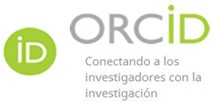Genially as a teaching strategy to strengthen reading: An experience with students aged six to seven years
DOI:
https://doi.org/10.62697/rmiie.v3i2.98Keywords:
Genially, reading, educational games, educational strategies, teaching, learningAbstract
The objective of this research was to improve the teaching and learning of reading in students aged six to seven years at the Colombia basic general education school, located in the Nazón parish, where a lack of interest and motivation towards reading was evident. A mixed approach of descriptive scope and quasi-experimental design was adopted, collecting data before and after the intervention. The methodological approaches included the hypothetical-deductive to address the research question and the historical-logical to develop the theoretical framework and state of the art. A survey of 20 questions was applied before and after, measured using the Likert scale, validated by the Delphi method and with a Cronbach's alpha reliability of 0.927. Data analysis with JASP software revealed that motivation and interest in reading were low in the pretest. Based on these results, the strategy "Genially: Innovating Didactics to Enhance Reading in Children from 6 to 7 Years Old" was developed and implemented, adapted to Design Thinking instructional design. The post test showed a significant increase in motivation and interest in reading, confirming that Genially is a useful tool to encourage reading in children, improving their motivation and participation in the educational process.
Downloads
References
Antolín, M. (2020). Gamificación y Flipped classroom en la enseñanza del español como lengua extranjera. (Trabajo de fin de grado). Universidad de Cantabria.
Chasipanta-Llulluma, R.-P. (2023). Herramienta multimedia Genially para fortalecer la enseñanza aprendizaje de la lecto-escritura en niños segundo de básica. (Trabajo de titulación). Universidad Nacional de Educación.
Ecuador. Ministerio de Educación y Cultura. (2017). Plan Nacional de Promoción del Libro y Lectura “José de la Cuadra”. https://cerlalc.org/wp-content/uploads/2018/09/42_Plan_Nacional_Lectura_Ecuador-1.pdf
Ecuador. Ministerio de Educación. (2024). Colmena Herramientas para la construcción participativa de los Instrumentos de la gestión escolar. https://educacion.gob.ec/wp-content/uploads/downloads/2023/04/Colmena-modulos-integrados.pdf
Espinoza-Pérez, R.-G., García-Herrera, D.-G., Álvarez-Lozano, M.-I., & Erazo-Álvarez, J.-C. (2020). Genially y Powtoon como recursos didácticos en Básica Elemental. Revista Arbitrada Interdisciplinaria Koinonía, 5(5), 439–457. https://doi.org/10.35381/r.k.v5i5.1053
García-Rodríguez, A., & Gómez-Díaz, R. (2016). Lectura Digital Infantil. Dispositivos, Aplicaciones y Contenidos. Revista Interamericana de Bibliotecología, 43(1), 1–4. https://doi.org/10.17533/udea.rib.v43n1eRs1
Genially. (2019). Aprende todo sobre los contenidos interactivos. https://blog.genially.com/contenidos-interactivos/
González-Moya, O., Ramos-Rodríguez, E., & Vásquez-Saldías, P. (2021). Implicaciones de la gamificación en educación matemática, un estudio exploratorio. Revista de Educación a Distancia, 21(68), 1–22. https://doi.org/10.6018/red.485331
Gortaire-Díaz, D., Beltrán-Moreno, M., Mora-Herrera, E., Reasco-Garzón, B., & Rodríguez-Torres, M. (2023). Constructivismo y conectivismo como métodos de enseñanza y aprendizaje en la educación universitaria actual. Ciencia Latina Revista Científica Multidisciplinar, 6(6), 14046–14058. https://doi.org/10.37811/cl_rcm.v7i1.4672
Guzmán-Rivera, M.-Á., Escudero-Nahón, A., & Canchola-Magdaleno, S.-L. (2020). “Gamificación" de la enseñanza para ciencia, tecnología, ingeniería y matemáticas: cartografía conceptual. Sinéctica, 54. https://doi.org/10.31391/s2007-7033(2020)0054-002
Isquise-Aroni, M.-E., & Rivera-Rojas, L.-G. (2020). La importancia de la gamificación en el proceso de enseñanza y aprendizaje. (Trabajo de investigación). Universidad San Ignacio de Loyola.
López-Arciniega, L.-A., Ramírez-Covarrubias, A.-C., Villegas-González, M.-P., & Arriaga-Nabor, Ma.-O. (2023). Gamificación en la Educación Superior. CISA, 5(5), 1–13. https://doi.org/10.58299/cisa.v5i5.59
Organización de las Naciones Unidas para la Educación, Ciencia y la Cultura. (2019). La UNESCO llama a fortalecer los aprendizajes en Ecuador y destaca sus avances en Matemática y Ciencias en séptimo grado. https://fucav.org/wp-content/uploads/2023/11/INFORME-ERCE.pdf
Otero-Hamburfer, M.-J. (2021). Implementación de Genially como estrategia Lúdico-pedagógico para fortalecer el proceso de comprensión lectora en los estudiantes de grado cuarto del colegio del Sagrado Corazón-Calle 74 de Barranquilla (Atlántico). (Trabajo de Grado). Universidad de Santander.
Peñas-Moreno, M.-C., Garcia-Herrera, D.-G., Guevara-Vizcaíno, C.-F., & Erazo-Álvarez, J.-C. (2020). Gamificación en Centros de Desarrollo Infantil. KOINOMIA, 1(1), 570–588. https://doi.org/10.35381/r.k.v5i1.798
Pin Neira, M. C., & Carrión Mieles, J. E. (2022). Gamificación: Estrategia metodológica para el desarrollo de destreza de lecto-escritura. Revista Científica Sinapsis, 21(1). https://doi.org/10.37117/s.v21i1.604
Puñales-Ávila, L., Fundora-Martínez, C., & Torres-Estrada, C.-D. (2017). La enseñanza de la lectoescritura en la Educación Primaria: reflexión desde las dificultades de aprendizaje. Atenas, 1(37), 124–132. https://www.redalyc.org/journal/4780/478055147009/478055147009.pdf
Rauth, I., Köppen, E., Jobst, B., & Meinel, C. (2010). Design Thinking: An Educational Model towards Creative Confidence. ICDC. https://www.designsociety.org/publication/30267/Design+Thinking%3A+An+Educational+Model+towards+Creative+Confidence
Siemens, G. (2004). Conectivismo: Una teoría de aprendizaje para la era digital. https://ateneu.xtec.cat/wikiform/wikiexport/_media/cursos/tic/s1x1/modul_3/conectivismo.pdf
Downloads
Published
How to Cite
Issue
Section
License
Copyright (c) 2024 Ana Lucia Herrera-Luna, María Isabel Álvarez-Lozano, Daysi Karina Flores-Chuquimarca

This work is licensed under a Creative Commons Attribution-NonCommercial-ShareAlike 4.0 International License.
Authors who publish in Revista Mexicana de Investigación e Intervención Educativa (RMIIE), of Universidad Pablo Latapí Sarre agree to the following terms:
1. Copyright
Authors retain unrestricted copyright to their work. Authors grant the journal the right of first publication. To this end, they assign the journal non-exclusive exploitation rights (reproduction, distribution, public communication, and transformation). Authors may enter into additional agreements for the non-exclusive distribution of the version of the work published in the journal, provided that acknowledgment of its initial publication in this journal is given.
© The authors.
2. License
The articles are published in the journal under the Creative Commons Attribution-NonCommercial-ShareAlike 4.0 International License (CC BY-NC-SA 4.0). The terms can be found at: https://creativecommons.org/licenses/by-nc-sa/4.0/deed.en
This license allows:
- Sharing: Copying and redistributing the material in any medium or format.
- Adapting: Remixing, transforming, and building upon the material.
Under the following terms:
- Attribution: You must give appropriate credit, provide a link to the license, and indicate if any changes were made. You may do this in any reasonable manner, but not in any way that suggests the licensor endorses or sponsors your use.
- NonCommercial: You may not use the material for commercial purposes.
- ShareAlike: If you remix, transform, or build upon the material, you must distribute your creation under the same license as the original work.
There are no additional restrictions. You may not apply legal terms or technological measures that legally restrict others from doing anything the license permits.












